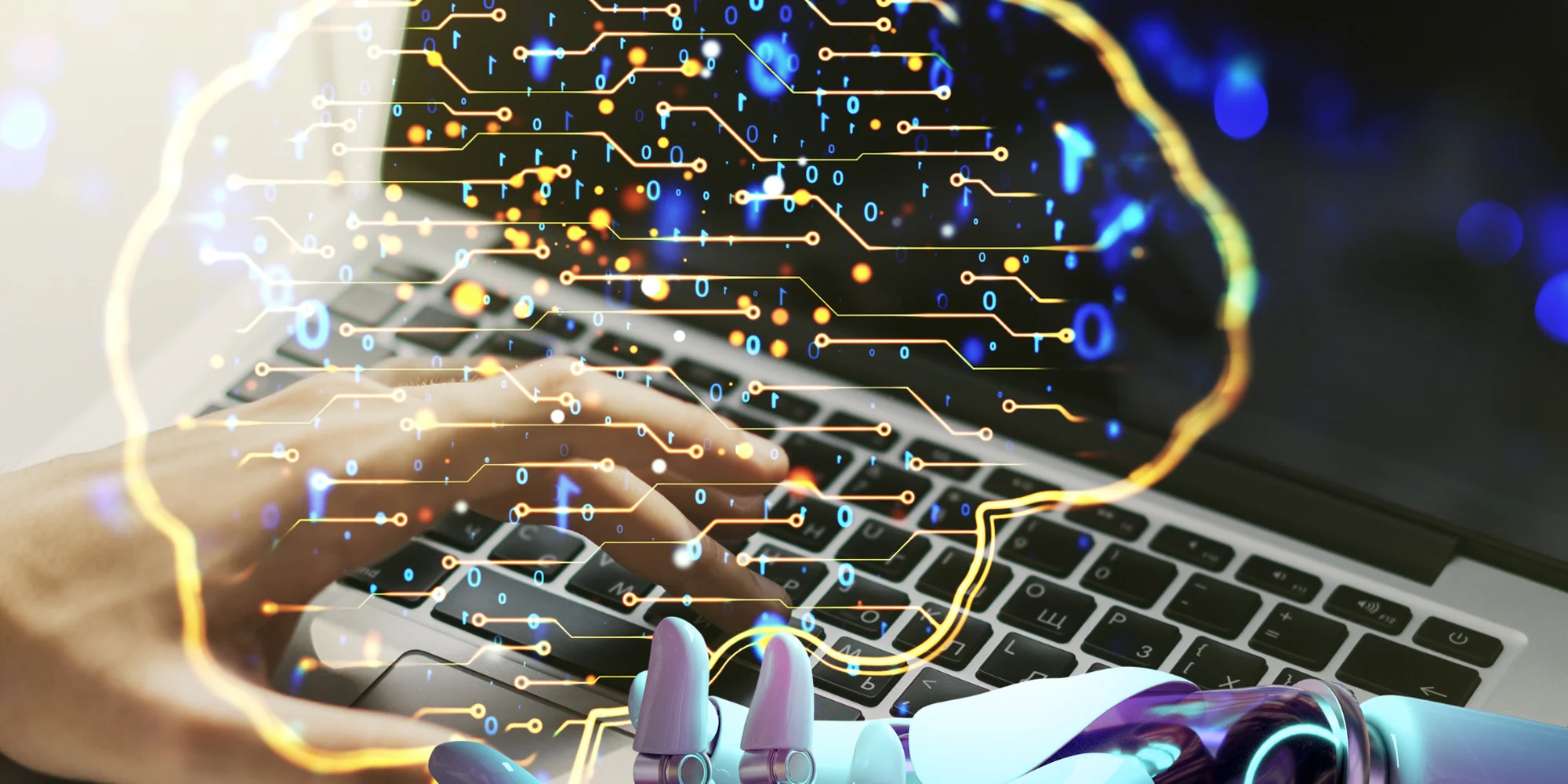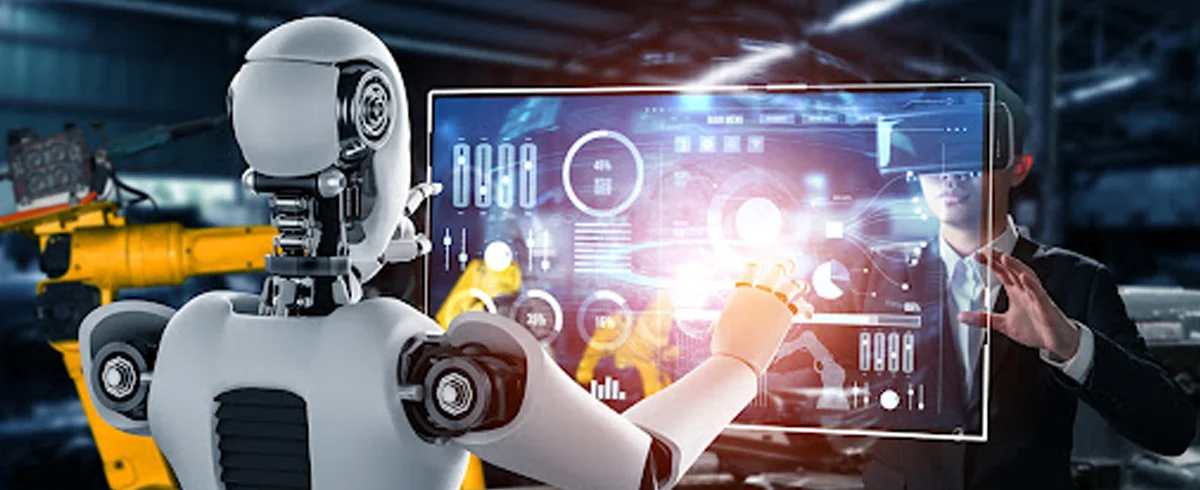Necessary Always Active
Necessary cookies are required to enable the basic features of this site, such as providing secure log-in or adjusting your consent preferences. These cookies do not store any personally identifiable data.
|
||||||
|
||||||
|
||||||
|

Artificial Intelligence and Machine Learning are the buzzwords of the tech world. Since both the terms are based on statistics and math’s, people often get confused between them.
Today, no conversation on technology is complete without the words Artificial Intelligence and Machine Learning. These two have become buzzwords, at the top of advancements in intelligent systems and software, frequently popping up in more broad domains like Big Data and Analytics.
But, don’t worry! In this blog, we will cover the major differences between artificial intelligence and machine learning to eliminate this confusion. However, before we proceed with learning the differences, let me help you solidify the broader understanding of what artificial intelligence and machine learning are.
Artificial Intelligence is a technology that allows computers and machines to perform various processes of perception, thinking, understanding, analysis, and others. This futuristic technology aims to ease human effort by doing all day-to-day tasks.
It’s creating virtual personal assistants and intelligent conversational systems as well as more complex systems in healthcare, finance, and self-driving vehicles. AI is no longer about finishing up the chores efficiently but also about opening prospects that address complicated problems of the world. The devices that are equipped with AI are continuously evolving with newer developments coming in every day..

Apart from just being useful, AI is also driving innovation in new areas of application of the technology including predictive analysis, robotics, and experiences. For instance, AI in customer success is bringing in a paradigm shift in how companies approach their clients. Also, keeping up with the AI trends helps organizations stay ahead of the curve in capitalizing on this technology.
Machine Learning (ML) is a new field of Artificial Intelligence that enables systems to improve their ability to learn and adapt from past experiences on their own without additional coding. It has also contributed to the foundation of many practical applications that include using recommender systems in streaming services, reducing fraud risks in the financial industry, using predictive analytics in manufacturing to determine equipment’s state, and applying natural language processing algorithms in chatbots and voice assistants.
Machine Learning app development presents a way in which business apps can be customized. Besides, it is necessary to understand how to use the proper ML platform to create, implement, and scale many models across industries to guarantee sustainable prosperity in the future. Though Machine Learning is still developing, it is opening doors to ideas such as self-driving cars, real-time translation, and detailed climate prediction.
Artificial Intelligence (AI) and Machine Learning (ML) are related fields but perform different functions. AI is a broad concept where machines are designed to imitate human intelligence, including reasoning, decision-making, and problem-solving. It includes a range of technologies aimed at enabling machines to perform tasks typically requiring human intelligence. On the other hand, ML is a subset of AI that enables machines to learn from data and improve their performance over time without explicit programming. Listed down below are a few major differences between AI and ML.
| Aspect | Artificial Intelligence (AI) | Machine Learning (ML) |
|---|---|---|
| Definition | Artificial Intelligence enables machines to simulate human behavior. | Machine Learning is a subset of AI that allows machines to learn automatically from past data without explicit programming. |
| Main Focus | The main work of AI is decision-making. | The main work of ML is to allow systems to learn new things from data. |
| Orientation | AI is intelligence-oriented. | ML is focused on learning. |
| Approach | AI mimics human behaviors to solve problems. | ML creates self-learning algorithms. |
| Purpose | AI focuses on creating intelligent systems capable of performing various complex tasks. | The purpose of ML is to create machines that perform specific tasks for which they are trained. |
| Success vs. Accuracy | The aim of AI is to increase the chances of success. | The primary concerns of ML is accuracy and patterns. |
| Examples and Applications | AI is used in customer support chatbots, personal virtual assistants like Siri, Expert systems, online game playing, and humanoid robots. | ML powers solutions like online recommender systems, search algorithms of SERPs (Google, Bing), and social media friend tagging. |
| Types | AI is categorized into three types: Weak AI, General AI, and Strong AI. | ML is categorized into three types: Supervised Learning, Unsupervised Learning, and Reinforcement Learning. |
| Specificity | AI is more specific about learning, reasoning, and self-correction. | ML is specific to learning and self-correction (when introduced with new data). |

From organizational efficiency to better creativity, the benefits of Artificial Intelligence and Machine Learning are changing industries and personal lives. In 2024 and beyond, these technologies will promote growth at a higher rate. Industries that have seen productivity improvements include healthcare, manufacturing, and marketing. Business leaders have estimated an increase in efficiency up to 73% through the application of ML.
Here is the list of 5 benefits that industries could get by the application of AI and ML:
Related Post – 10 New Ways to Communicate in The Age Of Digital Technology
Artificial Intelligence and Machine Learning are everywhere from home appliances to office laptops. Moreover, with the Internet of Things like Alexa and smart watches entering our lives, we are dependent on AI and ML more than ever. Here are the 3 examples of the usage of these technologies:
AI has become an integral part of many aspects of our life, changing the way we relate to technology and the world at large. From mundane applications to transforming entire industries, AI is no longer a futuristic idea but a reality for today. Its strength lies in enhancing personalization, improving efficiency, and driving innovation across sectors. Following are some of the notable instances of AI incorporation:
Alexa by Amazon, Siri by Apple, S Voice by Samsung, Cortana by Microsoft, and Google Assistant. All of these are perfect and most popular examples of personalized AI assistants. These tools have enabled human interactions with gadgets and have enabled us to do a plethora of things from hotel bookings to window shopping.
AI robots are another example of AI integration. Think of the world’s first AI humanoid robot, Sophia, who is incorporated with artificial intelligence. Her creators claim that Sophia personifies their dreams for the future of AI. Sophia can also initiate conversations on a variety of predefined topics. In fact, AI robots have a keen role to play in the future.
AI has a great role to play in facilitating the future of marketing. With tools like Slack and Grammarly, today marketers are allocating huge amounts of financing towards incorporating AI in their marketing tactics.
Now that we have learned about AI and its examples in a brief manner, let us move forward to understanding Machine Learning in depth.
Machine learning (ML) has become an integral part of many industries, changing the way we interact with technology and make decisions. From healthcare to finance, ML’s applications are broad and expanding day by day. As technology develops, so does its potential to enhance efficiency, accuracy, and decision-making. Below is a list of examples where Machine Learning is used vastly:
Image recognition is a widespread example of ML. It helps identify an object as a digital image, based on the intensity of the pixels in black-and-white images or color images. For example, labeling an x-ray, assigning a name to a photographed face, recognizing handwriting, and many more.
ML is also used for facial recognition within an image in which using a database of people, the system identifies commonalities and matches them to faces.
In the past few years, Machine Learning has played a significant role in the diagnosis of diseases. It assists in formulating a diagnosis or recommending treatment options that require the incorporation of ML. In fact, oncology and pathology also use machine learning to recognize cancerous tissues and analyze body fluids.

ML helps extract structured information from unstructured data. Several organizations collect huge chunks of data from customers and using ML algorithm, they automate the process of annotating datasets for predictive analytics tools. Examples: Generating models to predict vocal cord disorders, developing methods for prevention, diagnosis, and treatment of disorders, and many more.
As Artificial Intelligence and Machine Learning continue to grow, they unlock new opportunities, change processes, and improve decision-making capabilities. Industries are increasingly adopting these innovations to improve efficiency and stay competitive, making AI and ML as central forces shaping the future of business. Ranging from transforming the concepts of healthcare and education to speaking of sustainability and automation, their ability to solve multifaceted problems is making a breakthrough impact across numerous companies and societies.
They are allowing developers to build better systems, work more effectively, and provide solutions that would have been unimaginable before. There will be more focus on relevant issues such as responsible AI & ML and information privacy.
Increased regulation and control over the use of AI and ML will become a necessity in the future after learning about their benefits. These technologies are mandatory for the betterment of future intelligence that is characterized by more strong, updated, and closely integrated applications.
Sign up to receive our newsletter featuring the latest tech trends, in-depth articles, and exclusive insights. Stay ahead of the curve!